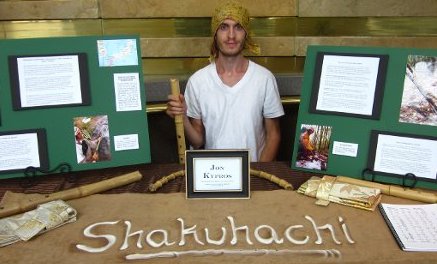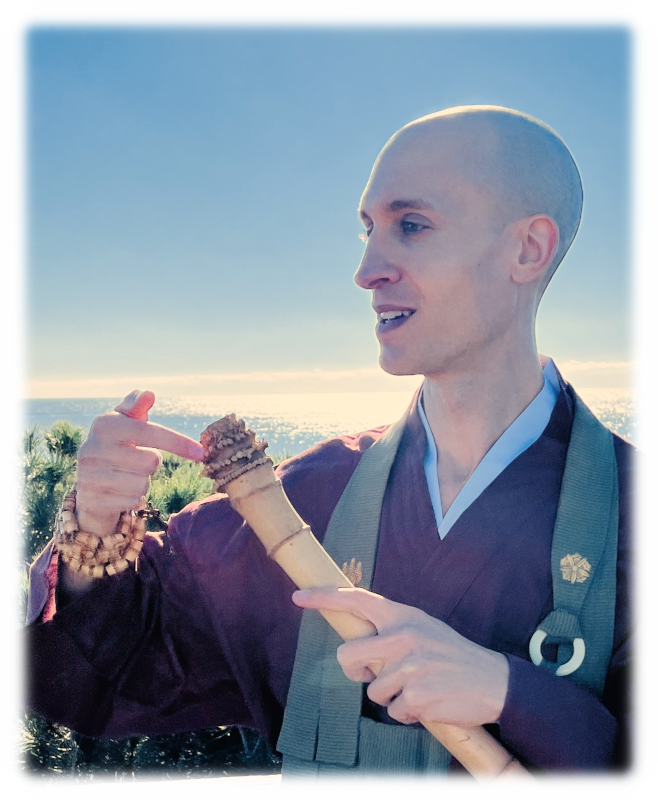
Teaching people about shakuhachi, Spain, 2024
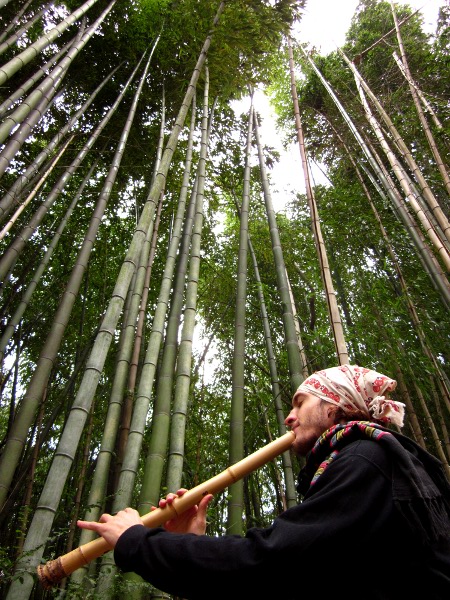
Playing shakuhachi in front of giant Madaké bamboo, 2010

Playing shakuhachi by visible Madaké bamboo rhizomes, 2010
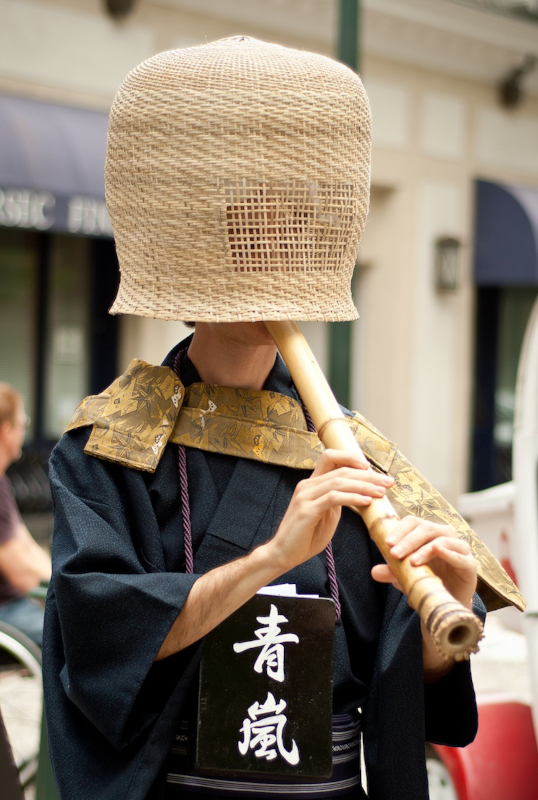
Practicing formal shakuhachi Takuhatsu Komuso alms begging in Asheville, NC, June 4, 2012 (photo by Steve Shanafelt)
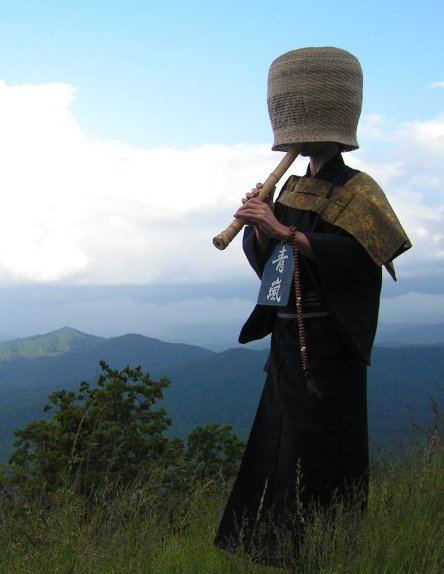
Me in my self woven Komuso Tengai hat, 2011
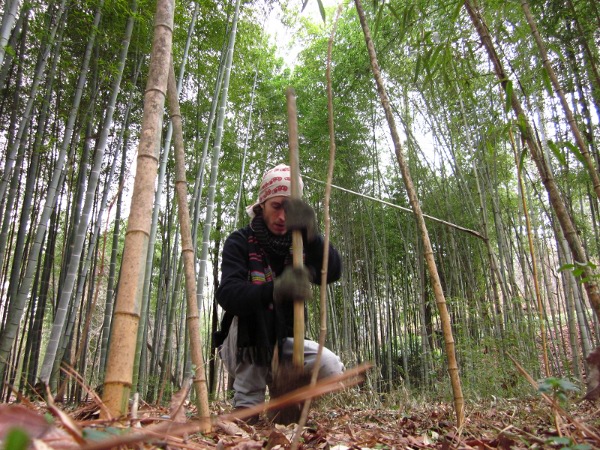
Harvesting Madaké bamboo sub. var. 'Green stripe' for shakuhachi (note the giant Moso bamboo behind me), 2010
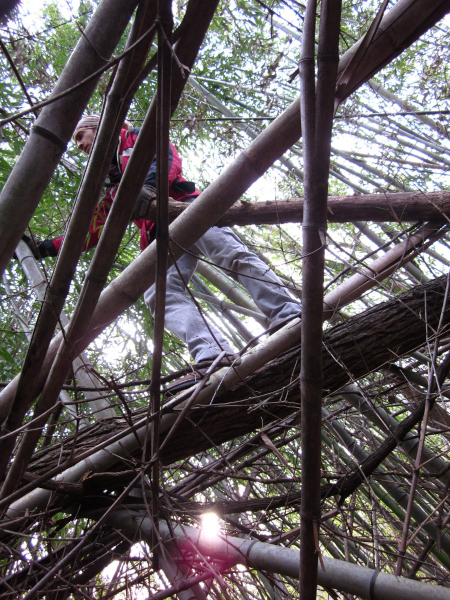
Precariously traversing a wild, unkempt Madaké bamboo grove in search for the perfect pieces for shakuhachi, 2010

Pounding Mochi for New Year's in Japan at Komyoji Temple. Right is Shibata Jr. and top is a person whom I didn't get an opportunity to formally meet, 2019
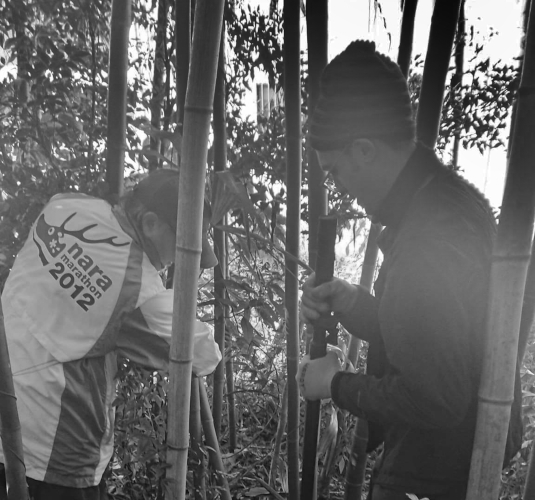
Digging Madaké bamboo in Nara, Japan (the gentleman to my left is the land owner), 2019
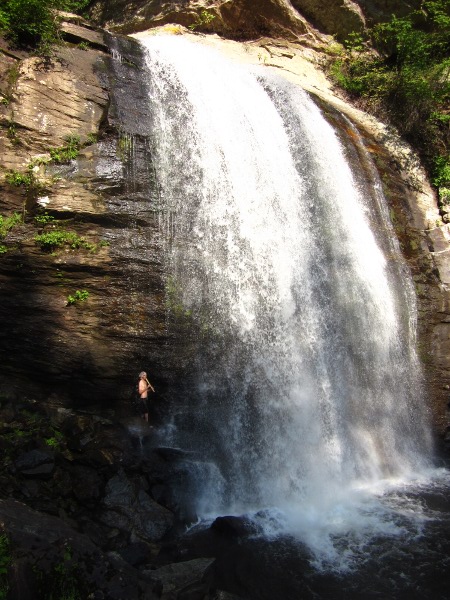
Playing shakuhachi piece Taki Otoshi the waterfall Honkyoku under a giant waterfall, 2011
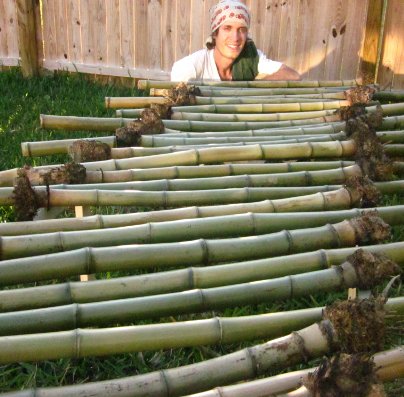
My harvest of Japanese Madaké bamboo drying in the sun, 2010
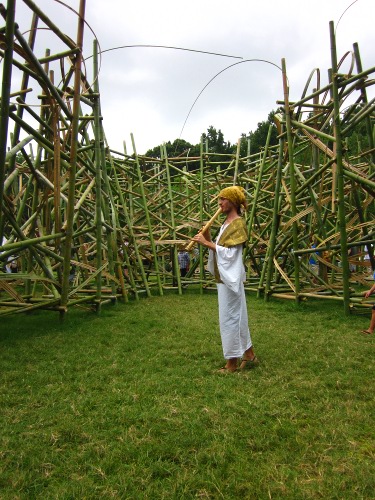
Performing shakuhachi with Buto dancers for Tetsunori Kawana's unveiling of Madaké bamboo installation, 2011
Teaching people about shakuhachi at a bamboo festival, 2012
About Josen (Jon Kypros)
“How did you get into shakuhachi?”
I love bamboo and started making flutes from it at around the age of fifteen. I was also beginning to practice meditation around this time. Just about a year or so into it I found the shakuhachi which immediately became the center of my focus with bamboo flutes, and has remained so ever since.
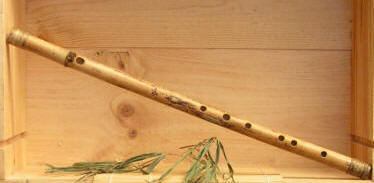
One of my first bamboo flutes which would've been back in 2001 or 2002 when I was around sixteen years old (photo is from back then too, can you tell). I harvested the bamboo for this in Florida where I was living at the time.
In 2005 at age nineteen I moved to New York City with little to my name so that I could study the shakuhachi under Ron Nyogetsu and Kurahashi Yodo II, whom I also studied from in Kyoto, Japan. In 2010 I began studying under Justin Senryu, and over a decade of diligence later I was honored with the title of Dai Shihan or ‘Grandmaster’.
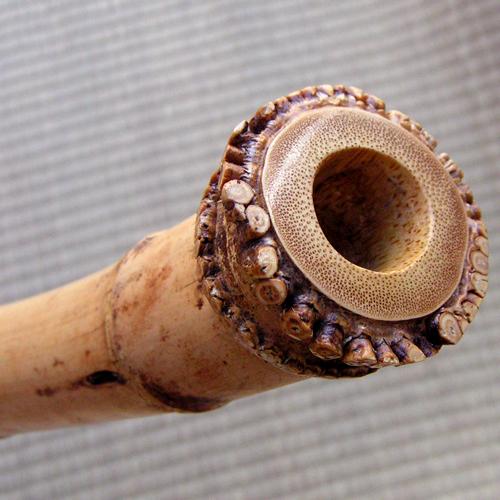
One of my shakuhachi from way back in 2007, NYC
I've also taken the Zen Buddhist Precepts as a lay practitioner of Soto Shu or "Dogen’s Zen". For me, both shakuhachi and Zen are about the effort, about caring, and making any small contributions that I can in my short lifetime.
As for my name, Josen means 'Eternal Spring' and the Kanji are 常泉. It's both a Chikumei and a Kaimyo or 'Bamboo [shakuhachi license] name' and 'Dharma name'. Both are given by ones teachers after many years of dedication.
You can see more photos of my past works in my journal post, A photo archive of shakuhachi I've made over the years.
Timeline
- b. 1985 Jonathan Harrison Kypros (Κυπριανός)
- '01~’02 - Began formal meditation practice and crafting bamboo flutes, age fifteen~sixteen.
- '05 to '08 - Moved to NYC to study the Jin Nyodo style under Ron Nyogetsu and Kurahashi Yodo II, also in Kyoto, age nineteen. Granted the maker's name Shingetsu.
- '08 - Among the first to utilize YouTube for shakuhachi instruction (oldest videos were unfortunately deleted).
- '10 - Pioneered the use of Japanese Madaké bamboo growing in America for shakuhachi.
- '10 to '22 - Studied older styles of Honkyoku from Justin Senryu for over a decade culminating in a Dai Shihan 'Grandmaster' license (大師範) and the Chikumei ‘bamboo (shakuhachi) name’ and Kaimyo 'Dharma name' Josen 常泉 which means 'Eternal Spring', as in water spring.
- '11 - First non-Japanese person to weave a Komuso shakuhachi monk Tengai "basket hat".
- '15 - Authored Your Shakuhachi Journey (retired the book in '24).
- '18 - Fully released The Bell Shakuhachi, the world's first Jinashi and Jimori copies (discontinued). [I released the first iterations of The Bell Shakuhachi in 2012 and I began working on copying Jinashi all the way back in 2008]
- '23 - Introduced Murei 'No Bell' shakuhachi (無鈴); high quality 'above root' bamboo jinashi and jimori shakuhachi.
- '23 - Received the Zen Buddhist Precepts and the Rakusu.
The older, regional Honkyoku styles I teach
Below is a list of the older, regional styles of Honkyoku which were passed down to me by my teacher Justin Senryu. Much of these Honkyoku were preserved in the lineage of Yamaue Getsuzan 山上 月山 (b. 1908). Yamaue's student Sato Reido 佐藤鈴童 and their student Otsubo Shido both instructed my teacher. We help to preserve these pieces and others in Justin's Senryu-kai shakuhachi school, in which I hold my Dai Shihan 'Grandmaster' license. For the Seien Ryu of Fudaiji Temple, we have the late Iwata Seien VI to thank who also taught Justin directly.
While I've strived to perfect all of these styles over the years, I focus on the Fudaiji Honkyoku as passed down in both the original Seien Ryu form and the wonderfully more complexly ornamented versions from Myoan Taizan Ha.
- Fudaiji Temple 普大寺 (Seien Ryu 西園流)
Honkyoku from Fudaiji Temple 普大寺, Hamamatsu and Nagoya. These are the Honkyoku Higuchi Taizan first learned in his hometown and which he eventually used to form the basis of his 'Myoan Taizan Ryu' or 'Myoan'/'Meian', as it's commonly referred to, after moving to Kyoto. - Kinpu Ryu (aka. Nezasa-ha) 錦風流 / 根笹派
Honkyoku from Aomori prefecture in the far North which was founded by still active Samurai. Kinpu Ryu has a distinct pulsing breath called Komi buki. - Kyushu-Kei 九州-系
Honkyoku from Kyushu which is said to be the birthplace of Honkyoku. From various Komuso Fuke shu temples such as Icchoken aka Itchoken. - Oshu Kei 奥州-系
Honkyoku from the former Oshu region which included Echigo Myoanji Den 越後国 明暗-伝, Northern Japan: significant influence on Watazumi, and thus his student Yokoyama Katsuya. - Myoan Shinpo Ryu 明暗真法流
Honkyoku from Myoanji temple, Kyoto. Also known as Kyu or 'Old' Myoanji. Shinpo Ryu uses a largely different set of Katakana for its notation (prior to Taizan's Myoanji which has none of the Honkyoku from Kyu Myoanji).
Honkyoku styles from Masters
- Myoan Taizan Ha or Ryu 明暗 対山派
I teach select Honkyoku from Myoan Taizan Ha, including all of the Myoan versions of the original eleven Fudaiji Seien Ryu Honkyoku. Higuchi Taizan 樋口 対山 (1856 - 11/22/1914), the founder of Myoan Taizan Ha, was first a Seien Ryu player. Taizan then traveled Japan collecting more Honkyoku before settling in Kyoto and founding the Myoan Taizan Ha, as well as reviving Kyoto's Myoanji temple. In particular, I specialize in transmitting a very faithful version of Ajikan directly based in the lineage of Miyagawa Nyozan 宮川 如山 (7/6/1868 - 11/22/1946). - Jin Nyodo Kei 神 如道-系
Jin Nyodo kei or style was the first I learned at age eighteen in NYC and Kyoto, Japan. This way of playing has come to have very long phrasing and a spacious feeling that many people enjoy. Jin Nyodo also made some very masterful arrangements of pieces such as Fudaiji Kyorei, Darani which is based on one of the Reibo from Myoan Shinpo Ryu. - Watazumi and Yokoyama Katsuya
Honkyoku from Watazumi Sensei's Dokyoku and his student Yokyoyama Katsuya's Chikushinkai 竹心会 AKA Kokusai Shakuhachi Kenshukan (国際尺八研修館) or KSK, as it's referred to outside of Japan. I specialize in the piece Tamuké. I also transmit Hon Shirabe and Yamagoe.
Exploration and Creation - Improvisation and Composition
We can preserve these classics and enjoy the freedom to explore and create. I would greatly enjoy empowering and encouraging you to explore via improvisation, and maybe even create your own humble compositions. Like learning how to write, eventually we can make poetry — even if that just means playing the notes our hearts want to hear in the moment…
